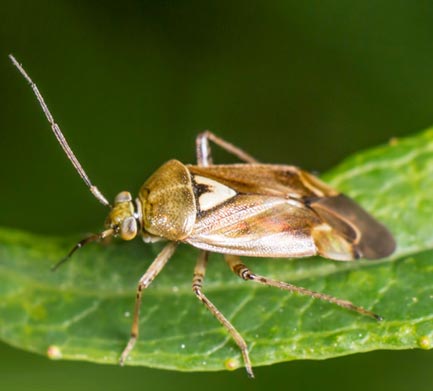 Lygus bugs, including the tarnished plant bug, are pests in cotton and other crops.
Lygus bugs, including the tarnished plant bug, are pests in cotton and other crops.
Lygus lineolaris, the flat and yellowish-brown adult plant bug, is the most common. The hemelytra, like those of all hemipterans, change from hard covering to membranous wing over the abdomen. At the juncture of the hard wing and membranous posterior portion, there is a yellow triangle articulated wing adjustment called a cuneus (que-knee-us). This gives the plant bug great flight control; it can turn on a pinhead in midflight, helping it escape predators and crop scout sweep nets.
Lygus bugs cause early square shed in cotton. They puncture the square and damage the interior by external digestion with saliva. Once the inside of the square is liquified, they imbibe the contents with their piercing-sucking mouth part. Cotton responds by shedding the square.
Early square shed is extremely costly. The first position fruit on cotton is the largest and highest-quality. Protecting those first position squares is of paramount importance. Once cotton reaches cutout (a white flower within five nodes of the top node), plant bug damage is less problematic. The top squares after cutout are not likely to make cotton in time for harvest and the bolls will be small.
